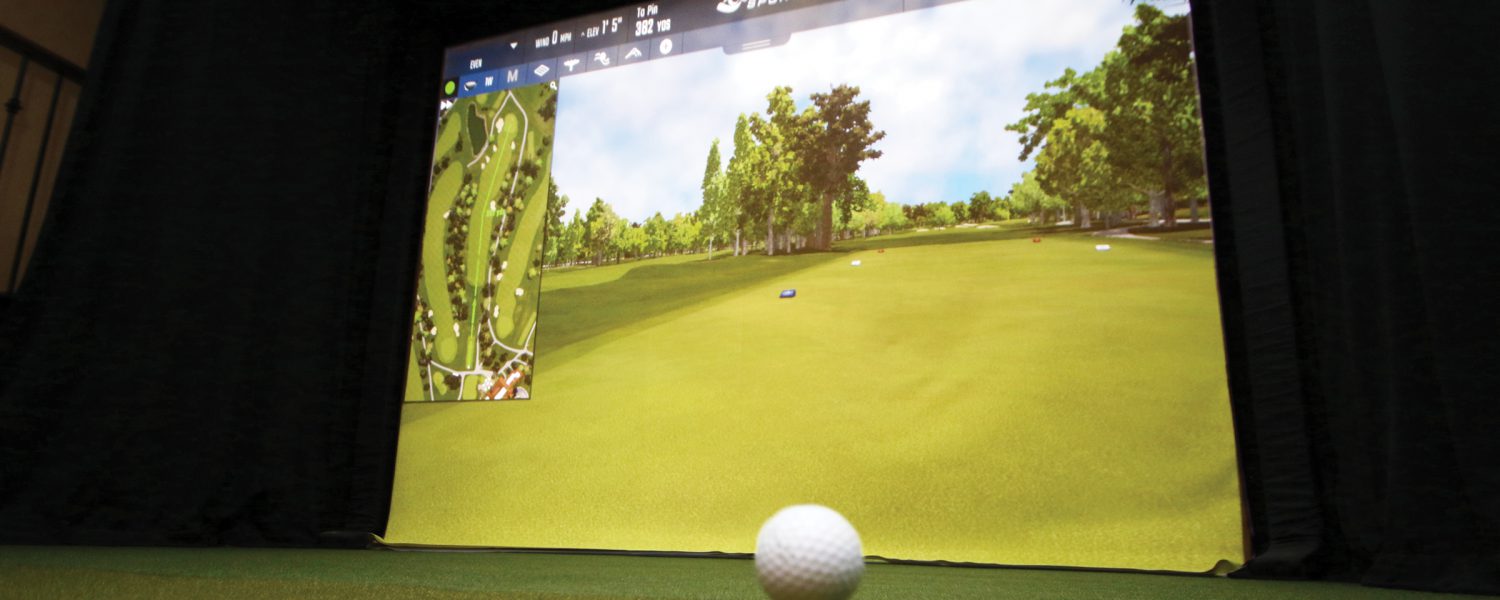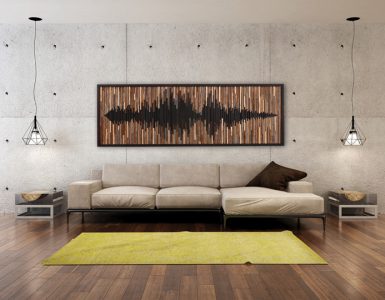The Ultimate Home Golf Playroom
Story by Dick Hildebrand
Photography by Michael Pietrangelo
Over the years, golfers have tried just about everything to improve their games. Many have taken lessons. Others have spent thousands of dollars on magazines while some have bought strange looking devices that fit over various body parts and are designed to result in the perfect swing. Some even trade their clubs every year, hoping the new designs and changes in technology will straight out errant shots and add yards to their drives.
However, in LaSalle, a 46 year-old software developer has raised the bar to new heights. The homeowner is a family man. He and his wife have four daughters and lead a fairly normal life. Both are avid golfers.
“I got into golf when I was 35,” he says, “and took it up basically out of frustration. Most of my friends played and I felt left out. It was more like I wanted to fit in…it was a social thing. But after I started, I really enjoyed it and ended up playing 3 or 4 times a week.” At the time he was working a lot of hours and often didn’t get home until 8 or 9 in the evening when most practice facilities had already closed and “I really wanted to reduce my handicap.” That’s when the gem of an idea sprouted. As he puts it: “I thought it would be a real good idea if our house had high enough ceilings to accommodate a practice area and as time went on and I got more serious about the game, I started looking into my options.” It was a frustrating search, he became discouraged and the idea was placed on the back burner for some time. A couple of years ago, he took action and hired an architect to study the feasibility of transforming a portion of his home, a 500 square foot room in the basement, for a golf simulator. Work began in January of 2018 and the job was finished in August of that year.

To begin with, the home had 8-foot ceilings which meant that anyone taller than 5 feet 5 inches couldn’t properly swing a golf club. So, the first order of business, was to “dig the floor down. We had to cut it and dig down four feet to accommodate a finished height of 11 feet. One foot was used to handle the stone and gravel for the footings and cement, which then gave me the proper distance between floor and ceiling.” It was a daunting task. Obviously, since heavy machinery couldn’t be brought into the home, a company with a hydro excavator which uses high water pressure, was brought in to tear up the space under the flooring, which was made of imported Italian marble. “People thought i was crazy to strip out that nice imported marble.” At one time the floor resembled a swimming pool.
After all the measurements had been completed according to manufacturers’ specifications, the final steps were taken to replace wall panels, electrical services, all the necessary wiring for the simulator which included a ceiling-mounted projector. The architect skillfully drew all the elements together so that the finished project would blend with the rest of the décor, rather than look like a golf practice area.
For the most part, the new simulator works on the same principal as commercial units, although it’s actually more advanced. The high-end unit, manufactured by Foresight Golf, is designed to provide both analytical information and entertainment to players using it. The unit features sophisticated launch monitor software that provides data “like your clubface is open, or your angle of attack was a little too up, or your path was a little out to in, etc.” The equipment includes a putting module for the launch monitor which provides valuable information on getting the ball into the cup. The screen itself is huge, measuring 12-feet wide and 10-feet high, about the same size as ones found in commercial establishments. Players can use every club in their bag and play the game with genuine balls. Special safeguards have also been installed to ensure that bad shots and stray golf balls don’t damage any part of the room.




Controlling the simulator software is done through the secondary screen on the left. 
A functional beautiful reckroom for both players and spectators. 
A view from the tee.
In the off-season, an instructor comes to the home regularly to provide lessons, while the owner uses his simulator every day. During the summer, the equipment is used less, since the owner spends a fair bit of his time on the course. As he says, “Even though I started golfing about ten years ago, I didn’t really take it up until about 4 years ago. And since I got the simulator, my handicap has virtually been cut in half.” It now stands at 15 and he shoots anywhere between 85 and 90. By next season, his goal is to reduce the handicap to 10 which would represent scores in the very low 80s.
The man’s family has a construction background, which proved to be a bonus in completing the ambitious project. “People thought I was nuts for doing this,” he says, “but when you know what’s under the floor and you take the correct steps, it really isn’t as bad as one might think. But I can totally understand how they feel, even though everything turned out fine.”
One thing is certain. The simulator will never sit idle. Both the owner, his wife and one of their daughters use it regularly and on occasion friends will drop by for a game and some refreshments. The nice thing about it: he doesn’t charge admission!







Add comment